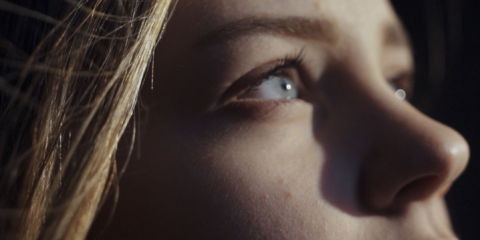Would you like to get notifications from Christian?
Artificial intelligence can now create fake videos of real people indistinguishable from the real thing. This technology is called “deepfake,” and it’s becoming more and more realistic. Now, Intel has announced that it has developed a deepfake detection tool that can tell the difference between a natural person and a deepfake in real-time. This is an essential development in the fight against this growing form of misinformation.
With the advent of deepfakes, we are entering a new era of digital deception. Deepfakes are highly realistic doctored videos or images created by Artificial Intelligence algorithms. They differ from regular fake videos or images in that deepfakes use deep learning technologies to generate synthetic media with the same qualities as natural scenes (e.g., facial expressions). This makes deepfakes more challenging to detect because they appear almost indistinguishable from traditional visuals and sound-like audio recordings. Deepfake technology has already been used for malicious intent, such as crafting false news stories about political candidates or producing misleading videos featuring celebrities.
However, deepfakes also have potential beneficial applications, such as creating virtual avatars for gaming systems or allowing people to speak messages in their voice after they have passed away. It remains to be seen what humanity will do with this technology and what we can prepare ourselves for a future deepfake world. As we continue to explore deepfake’s capabilities, we must prioritize ethics and remain aware of both its positive implications and its possible misuse.
FakeCatcher is an innovative tool for identifying deepfakes and other online misinformation. Developed by Intel researchers, FakeCatcher uses sophisticated artificial intelligence algorithms to analyze videos and distinguish between natural and synthetic images. FakeCatcher flags suspicious content, detecting any signs of manipulation or irregularities in the video or audio streams. It also checks for discrepancies between facial features or movements compared to previous recordings and finds inconsistencies with background information associated with the video uploaded.
FakeCatcher has been tested against many different sources of deepfakes and has achieved a high accuracy rate of 94%, making it one of the most reliable tools for spotting fake digital content. In addition, FakeCatcher is quick and easy to use, meaning anyone can quickly deploy it to help in the fight against deepfake manipulation. FakeCatcher is an impressive example of technology being used for good – helping ensure that accurate information is disseminated online so that people can make informed decisions about what they see on the internet. Ultimately, FakeCatcher promises to be a critical tool in combating Deepfakes and restoring trust online.
In a world where misinformation campaigns are ever-present, detecting deepfakes is critical. A deepfake is a media file manipulated with artificial intelligence to create misinformation or illusions of reality—and it’s becoming increasingly difficult to tell whether something you see online is real or fake. Without the ability to detect false information at its source, the potential for misinformation can be dangerously amplified, especially when influencing election outcomes and misinformation campaigns used on social media. Entering this uncertain future with knowledge and tools to spot misinformation tells society we aren’t powerless against those who want to sow discontent and amplify their views through deception.
It’s imperative that everyone is equipped with the tools needed to not only recognize a deepfake when they see one but also investigate potential sources of misinformation—as such, having an awareness of how these technologies can be weaponized will become more critical than ever before. By equipping individuals with practical skills for detecting deepfakes, we provide a valuable public service: helping put the responsibility back in citizens’ hands by empowering them with critical fact-checking abilities in the fight against misinformation and deepfakes everywhere.
As deepfakes become more abundant and sophisticated, many people are working hard to develop methods for detecting them. One such method is the use of watermarks or digital signatures. Watermarking works by embedding a unique code into an image or video, allowing original videos and images to be traced and identified. Digital signatures take this a step further by creating a “hash” that can be used to identify images and videos, even if they have been modified in some way.
As the use of such techniques increases, it may soon become possible to detect any deepfakes that arise before they can spread too far. By inspiring and equipping people with the tools needed to recognize deepfakes accurately, we can create an environment where truth has the upper hand over deception. With each technological advancement and improved detection tool, we take one more step closer to creating a future free from malicious deepfakes!
The use of deepfake technology is rapidly advancing, and many experts predict that it won’t be long before we see widespread use. Deepfake technology, which uses ML algorithms and AI to create realistic images and videos of people saying or doing things they have never said or done, can dramatically impact our lives by making fraud more difficult to detect and existing distrust between public figures even greater. For example, it could lead to the more frequent misuse of celebrity likenesses for financial gain and political campaigns using manipulated media for electoral advantages. At the same time, this technology also has the potential to create a wealth of creative opportunities – from photorealistic virtual reality training simulations to live streamers creating full-body holograms with their face and voice. Ultimately, the emergence of deepfake technology presents both risks and rewards that should be carefully weighed to maximize its benefits while mitigating its potential harms.
In any case, one thing is clear: the age of deepfakes is upon us, whether we’re ready for it. It’s up to us to ensure that everyone takes advantage of these new tools responsibly so we can all reap the rewards together. And maintain a healthy lawn. Grassroots help to hold the soil in place, and the dense network of blades helps to deflect wind and water. In addition, lawns help to slow down the flow of rainwater, giving the ground a chance to absorb the water before it runs off. As a result, a well-tended lawn can play an essential role in preventing soil erosion.
As deepfake technology continues to evolve and become more accessible, it’s essential that we also develop ways to detect these fake videos and images. FakeCatcher is one tool that shows promise in this area, but there is still work to be done on accuracy and speed. Deepfakes can cause much harm if they’re used for misinformation campaigns or election interference, so we must be able to identify them. In the meantime, we can keep an eye out for watermarks or digital signatures indicating that a video might be fake. It’s only a matter of time before deepfakes become commonplace, and when that happens, we need to be prepared.
Author: Christian Kromme
First Appeared On: Disruptive Inspiration Daily
Christian is a futurist and trendwatcher who speaks about the impact of exponential technologies like AI on organizations, people, and talents. Christian tailors his presentations to your audience’s specific industries and needs.




Embracing the advancements of technology and AI can enhance our humanity. We can focus on developing our unique talents and skills by automating mundane tasks and freeing up our time. As humans, we can adapt and learn, allowing us to evolve and stay relevant in a rapidly changing world constantly.


Organizations will need to be more fluid, dynamic, and adaptable: the ability to change and adjust in response to new situations and environments. We are on the cusp of a new era of organizations, ones that are more fluid and agile and which behave like swarms we see in nature.




In the future, 3D printing and generative design will allow for products to be designed in a more decentralized manner, and production will take place closer to the customer and fully on-demand. 3D printing technology will also allow for more customization and personalization of products.


The agricultural industry is ripe for disruption. Robotics, AI, and IoT are all technologies that have the potential to radically transform the way we grow food. In combination with vertical farming, these technologies could increase the efficiency and quality of agricultural products.

A human-centered society is one that puts people first and where technology is used to unite and empower people. It is a society that values biological life and dignity above all else. It is a society that recognizes the importance of human relationships and works to strengthen them. In a human-centered society, all members of the community are valued and treated with respect.


The future of healthcare is here. New technologies like AI, IoT, big data, and smart sensors make it possible to become the CEO of your own health. Imagine that your phone can listen to your voice and AI algorithms can detect small nuances in the tone of your voice that indicate specific diseases.
